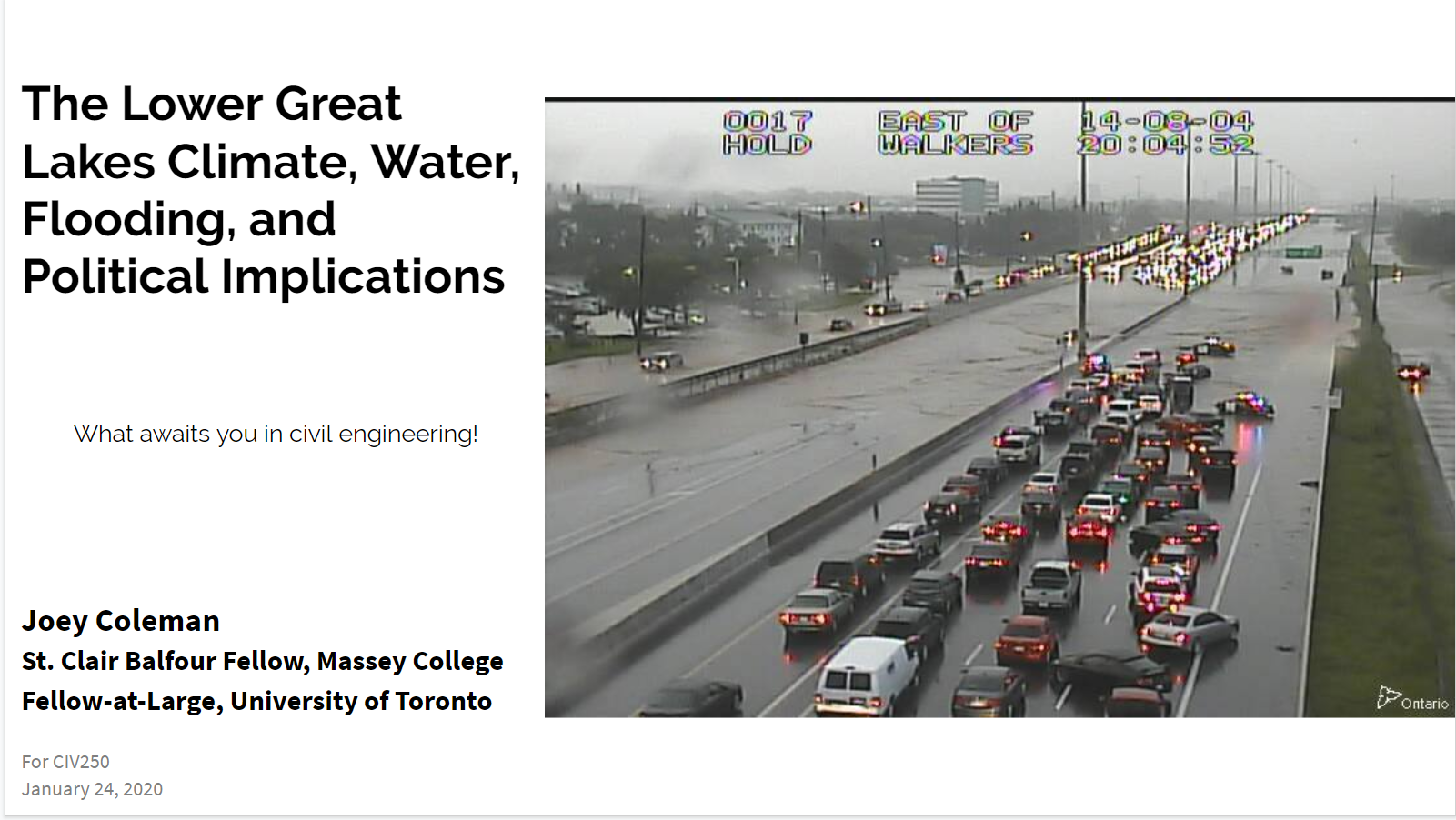Spoiler (or maybe not if you know me), it only went okay because I ran over the five minutes.
Tonight, I delivered a significantly shortened version of a civil engineering guest lecture I delivered in mid-January.
The talk, "The Lower Great Lakes Climate, Water, Flooding, and Political Implications" discusses the challenges facing civil engineers in designing for lake breeze convergence fronts which cause significant short bursts of rainfall in very short periods of time.
The lecture's focus is the 2014 Burlington Flood. I draw heavily from the great work of Conservation Halton.
The maximum rainfall gauge measurement during August 4, 2014 event was 192mm. This 192 millilitres fell over a six hour period with two bursts with estimated 10 minute increment rainfall rates at 100mm/hr or above. (pg 17, Harris & Doherty, 2015)
For comparsion, Burlington's average rainfall for the month of August is 82.0mm.
Insured losses for this event were $90-million. (Canadian Underwriter, 2014)
Lake breeze convergence fronts and their associated flooding are one of the primary reasons I'm studying civil engineering as a Fellow-at-Large at UofT.
I'm in the CIV250 Hydraulics and Hydrology class.
It is interesting to learn about the costs of designing infrastructure to handle these types of severe weather events (we can't afford to do so), the alternatives such as better storm water retention and decreasing run-off entering into systems are cost-effective, and that roads are designed to flood during severe events because the cost of repair is significantly less than "flood proofing".
The original lecture ran 35 minutes, to condense this into five minutes proved to be an interesting challenge. One I did not succeed at, on this first attempt, as I ran over my five minutes.
Feedback from my original lecture in January was positive, the students remarked they enjoyed learning about a real world example of the challenges they will address in their career, and that it was helpful to understand why I was joining them as a student in their class. (Yes, I guest lectured in a class I was taking).
I will modify this lecture during the coming months, and present a 20 to 25 minute version at the next The Public Record Press Club. (whenever that will be)
References:
Canadian Underwriter (2014, September 2). Burlington, Ontario flood damage estimated at $90 million. Canadian Underwriter. https://www.canadianunderwriter.ca/insurance/burlington-ontario-flood-damage-estimated-at-90-million-1003233967/
Harris, C., & Doherty, C. (2015). August 4th, 2014 Storm Event, Burlington [Government Document]. Conservation Halton. https://conservationhalton.ca/uploads/burlington_flood_2015_04_30_-_final.pdf
Sandink, D., Kovacs, P., Oulahen, G., & Shrubsole, D. (2016). Public relief and insurance for residential flood losses in Canada: Current status and commentary. Canadian Water Resources Journal / Revue Canadienne Des Ressources Hydriques, 41(1–2), 220–237. https://doi.org/10.1080/07011784.2015.1040458
